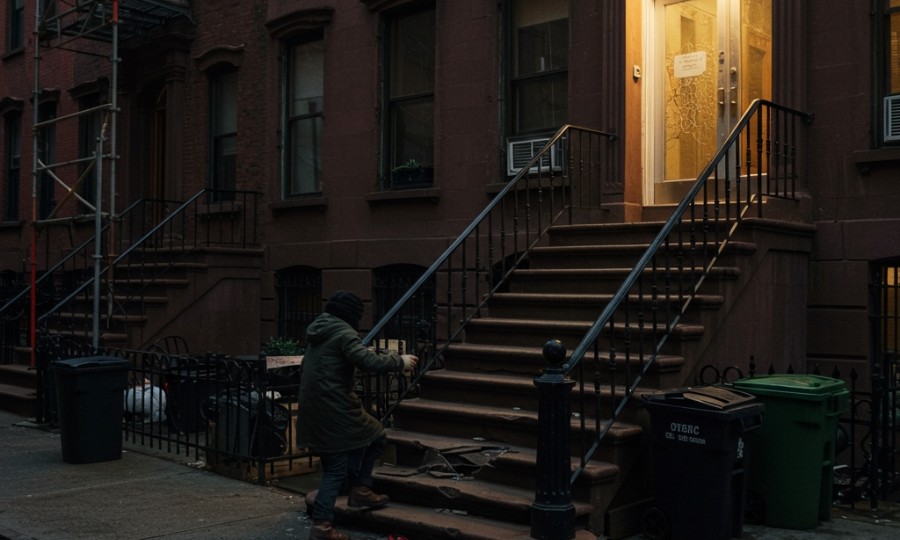
Experiencing a Slip and Fall in New York City? Building Codes Matter.
Experiencing a slip and fall accident in New York City can be a truly jarring and disorienting event. One moment, you’re going about your day; the next, you’re on the ground, potentially facing serious injuries and mounting medical bills. When this happens, a natural question arises: who is responsible? While many factors contribute to such accidents, one often overlooked yet critically important element is the role of building code violations. These violations can profoundly impact the strength and success of your personal injury claim. Indeed, understanding how these codes protect you, and how their breach can establish negligence, is vital for anyone seeking justice after an unexpected fall.
Understanding NYC Building Codes: Your Safety Blueprint
New York City’s building codes are far more than just bureaucratic rules; they are comprehensive sets of regulations designed to ensure the safety, health, and welfare of the public. These codes dictate everything from the structural integrity of buildings to the safety of stairwells, the adequacy of lighting, and the maintenance of walking surfaces. Property owners and managers, therefore, bear a legal responsibility to adhere to these standards. Their failure to do so can create hazardous conditions, directly leading to preventable accidents. Moreover, these codes establish a baseline for what constitutes a safe environment for residents and visitors alike.
The Link to Negligence: How Code Violations Prove Fault
In the context of a slip and fall case, negligence is the cornerstone of proving liability. Essentially, negligence means that a property owner or manager failed to exercise reasonable care, and this failure directly caused your injury. When a building code violation exists, it often serves as powerful evidence of such negligence. For instance, if a code mandates specific handrail dimensions and a property’s handrail doesn’t meet those, it’s a clear indication that the owner neglected their duty. Consequently, this violation makes it significantly easier to demonstrate that the property was unsafe and that the owner was at fault for not addressing the hazard. This direct link between a specific rule and a dangerous condition simplifies the legal process for injured parties.
Common Building Code Violations Leading to Slip and Falls in NYC
Numerous types of building code violations frequently contribute to slip and fall accidents across New York City. Understanding these common culprits can help you recognize potential issues if you’ve been injured. Specifically, let’s explore some key areas where code breaches often occur.
Inadequate Lighting: A Dangerous Darkness
Poor lighting is a surprisingly common and dangerous issue, particularly in stairwells, hallways, and parking garages. NYC building codes specify minimum illumination levels for various areas to ensure visibility and prevent accidents. If a property owner fails to provide sufficient light, it becomes incredibly difficult for pedestrians to see hazards like uneven steps, spills, or debris. Therefore, a dark environment can directly lead to a misstep and a painful fall. Clearly, insufficient lighting is not merely an inconvenience; it’s a significant safety hazard that violates established standards.
Unsafe Stairwells: Steps to Injury
Staircases are inherently areas of heightened risk, and building codes address this thoroughly. Codes often specify precise requirements for riser height, tread depth, and the presence of non-slip surfaces. Furthermore, they outline rules for consistent step dimensions, as even a slight variation can trip someone. If steps are uneven, worn, or lack proper traction, they pose a serious slip and fall risk. Consequently, a staircase that deviates from these crucial safety standards indicates a clear failure on the part of the property owner to maintain a safe environment. Indeed, unsafe stairwells are a leading cause of severe injuries.
Lack of Proper Handrails: Missing Support
Handrails provide critical support and stability, especially when navigating stairs or ramps. New York City building codes mandate specific requirements for handrail height, grip size, and continuous presence. For example, a missing handrail on a long flight of stairs is an obvious violation. Similarly, a wobbly or broken handrail offers no real support and can even cause a fall. Therefore, the absence or improper maintenance of handrails is a direct breach of safety codes, significantly increasing the risk of an accident. This deficiency can easily lead to a loss of balance and subsequent injury.
Loose or Damaged Flooring: Trip Hazards Underfoot
The condition of walking surfaces is paramount to preventing slips and falls. Building codes require floors to be kept in a safe and well-maintained state. This includes ensuring carpets are not torn or bunched, tiles are not cracked or loose, and floorboards are not buckling or rotting. Consequently, a property owner who neglects to repair such hazards is violating their duty to provide a safe pathway. Moreover, an unnoticed loose floorboard or a raised tile can easily catch a foot, sending someone tumbling. Thus, maintaining proper flooring is a fundamental safety requirement.
Other Relevant Violations: Beyond the Obvious
Beyond these common issues, other code violations can also contribute to slip and fall incidents. For instance, inadequate drainage on outdoor walkways can lead to dangerous ice or puddles. Furthermore, obstructions in hallways or stairwells that block egress or create tripping hazards often violate fire and safety codes. Property owners must ensure clear and safe pathways at all times. Ultimately, any condition on a property that deviates from established safety codes and causes an injury can be grounds for a negligence claim.
Gathering Evidence After a Slip and Fall
After a slip and fall, your immediate priority is your health and safety. However, once you are able, gathering evidence is incredibly important for your potential claim. Take photographs and videos of the scene, capturing the specific condition that caused your fall, especially if it relates to a potential code violation. Document the inadequate lighting, the damaged handrail, or the uneven step from multiple angles. Additionally, note the exact date and time of the incident, and collect contact information for any witnesses. Furthermore, seek medical attention promptly and keep detailed records of all your medical treatments and expenses. This documentation will be invaluable.
How an Experienced NYC Attorney Helps Your Case
Navigating the complexities of a personal injury claim, particularly one involving building code violations, can feel overwhelming. This is precisely where an experienced NYC personal injury lawyer from RMFW Law can make a profound difference. We understand New York City’s intricate building codes inside and out. Our team will meticulously investigate your accident, often bringing in experts like forensic engineers or building inspectors to identify specific code violations. Indeed, these experts can provide compelling testimony that strengthens your case. Moreover, we will gather all necessary evidence, handle communication with insurance companies, and tirelessly advocate for your rights. Our goal is to ensure that property owners are held accountable for their negligence.
Proving Liability: Connecting the Dots to Your Injury
Proving liability in a slip and fall case requires more than just showing a code violation existed. You must also demonstrate a direct causal link between that violation and your injury. In other words, the unsafe condition created by the code breach must have been the direct reason you fell and were injured. For example, if a broken handrail caused you to lose your balance and fall down the stairs, the causation is clear. Conversely, if you fell due to your own misstep unrelated to the handrail, proving liability becomes more challenging. Therefore, establishing this clear connection is a critical step in building a successful claim. Our legal team meticulously works to connect these dots, painting a clear picture of how the property owner’s negligence led to your suffering.
Potential Damages: What Compensation Can You Seek?
If your slip and fall accident resulted from a building code violation and another party’s negligence, you may be entitled to recover various damages. These damages aim to compensate you for the losses you’ve suffered due to your injuries. Specifically, this can include medical expenses, encompassing everything from emergency room visits to ongoing physical therapy and future medical care. Furthermore, you may seek compensation for lost wages if your injuries prevented you from working. Pain and suffering, a non-economic damage, also forms a significant part of many claims, acknowledging the physical discomfort and emotional distress you’ve endured. Additionally, if the injury impacts your long-term earning capacity or quality of life, those factors can also be considered. Ultimately, our firm strives to secure the maximum compensation you deserve to help you recover and move forward.
Take the Confident Next Step with RMFW Law
A slip and fall accident can profoundly disrupt your life, leaving you with pain, uncertainty, and financial burdens. However, understanding the critical role of building code violations in NYC personal injury litigation offers a path forward. These codes are your silent protectors, and their violation can be the key to holding negligent property owners accountable. If you or a loved one has suffered a slip and fall injury in New York City, don’t face the legal battle alone. Contact RMFW Law today for a free, compassionate consultation. We are here to listen to your story, explain your options in plain English, and guide you confidently through every step of the legal process. Let us help you seek the justice and compensation you deserve. You do not have to navigate this complex legal landscape by yourself.
Free Case Consultation
Injured in an accident? Contact Rosenberg, Minc, Falkoff & Wolff for a free and confidential case review with an experienced NYC personal injury attorney.
This article was drafted with AI assistance. Please verify all claims and information for accuracy. The content is for informational purposes only and does not constitute professional advice.


